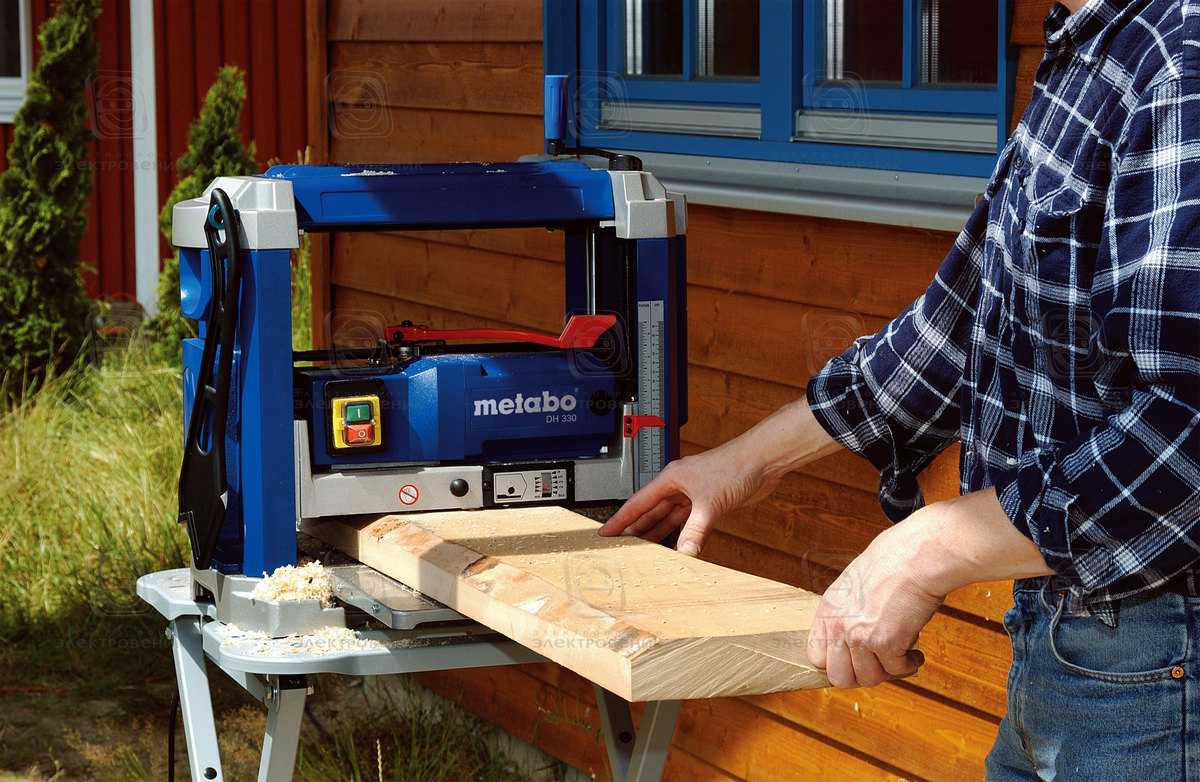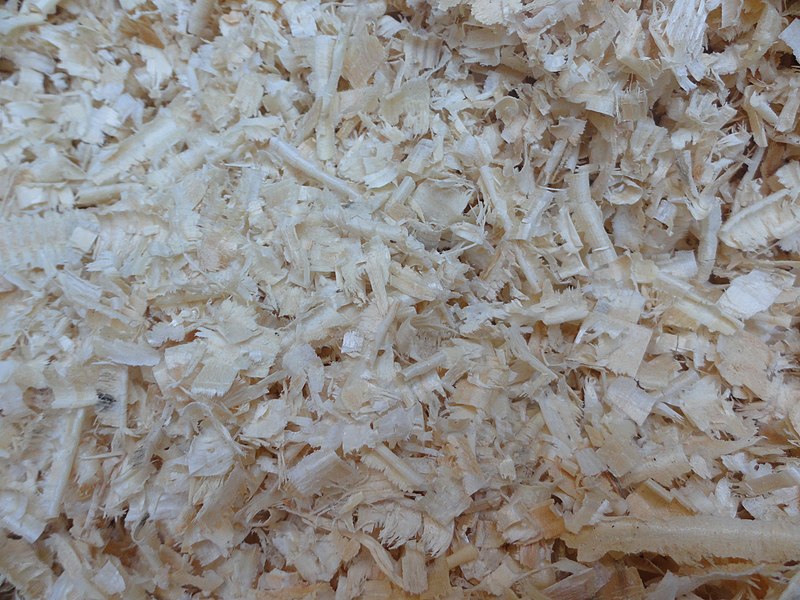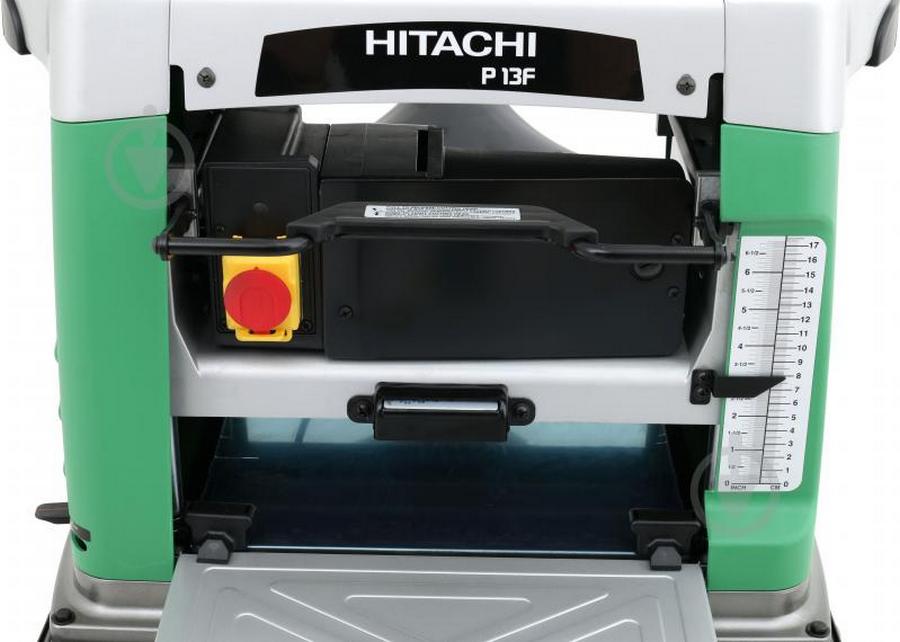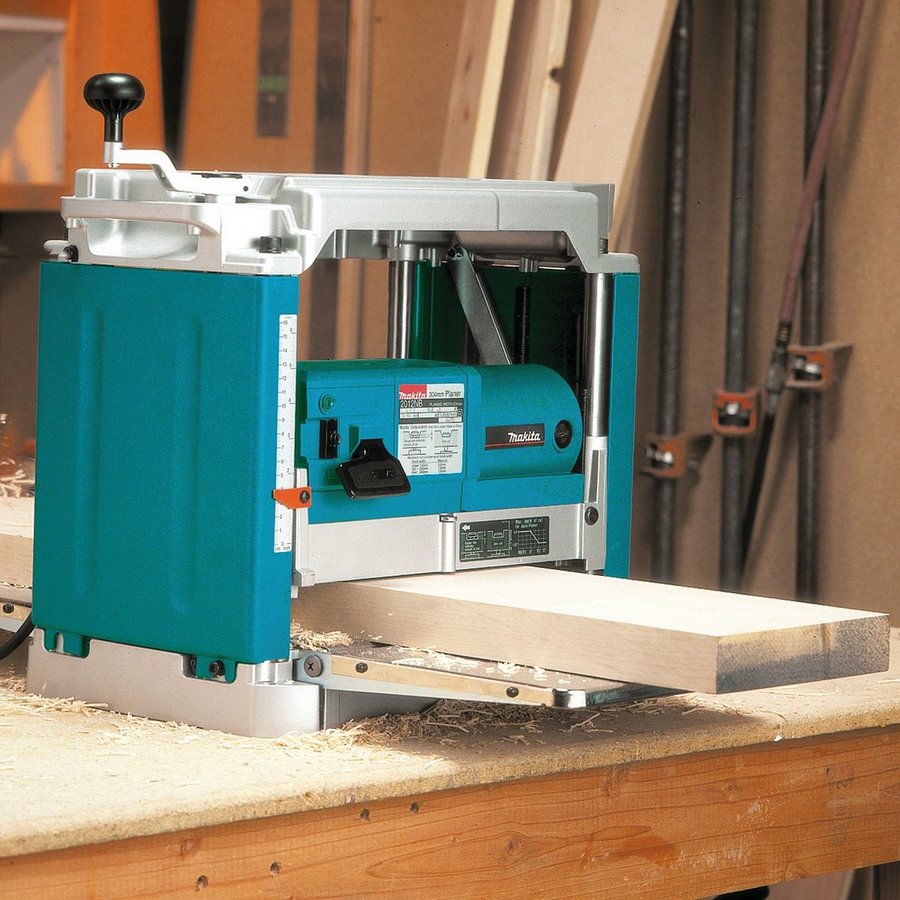
Ranking of the best planing machines for 2024
A planer for wood processing (jointer) is a special equipment designed for sawing and planing wooden blanks. With its help it is possible to create one or several basic surfaces on the bar. The machine is used for construction, renovation and finishing works.
Design
The design of the machine in question includes the following parts:
- Engine powered by 220 volts. An electric motor generates and transmits "torque" to the cutterblock with knives.
- Working table, consisting of front and rear plates (made of cast iron and have special stiffening ribs, due to which the stability of the working surface is ensured). The edges of the tiles are provided with special "stainless steel" pads, which protect the work surface from mechanical damage. The back plate is set at the same level as the cutting blades. The front plate is 2 mm lower than the back plate. The distance between them varies, depending on which layer of material needs to be removed from the workpiece being processed.
- The bed is made of very strong alloys. This element supports the entire mass of the machine, and must also withstand the forces that the operator puts on the workpiece. It also contains shafts with knives, guide parts and other fasteners.
- Planer shaft mounted between front and rear tiles. Attached to this shaft are blades of equal thickness, made of high speed tool steel. In the case when it is necessary to process material from hard wood on the machine, the shaft must be additionally equipped with hard-alloy solders.
- Guide - this element is a node that is responsible for moving the moving parts of the equipment and the workpiece itself. The rail is bolted to the bed and can be moved laterally.
- The circular railing is placed on the front tile and must fit snugly against the rail. This guard is made of sheet metal and protects the cutterblock.
IMPORTANT! As a rule, it is allowed to process parts with a length of 1 to 1.5 meters on planer equipment.Parts with a longer length are inconvenient to fix on the working surface of the table, they can be deformed, and at the same time, the accuracy of the cut can significantly decrease and in general there will be a general inconvenience in work. But to process parts less than 1 m long is generally traumatic.
Functioning principle
The complete operation of the equipment consists of the following stages:
- The back tile remains stationary throughout the entire production process. The position of the front tile is adjusted by the operator to the required height.
- After turning on the machine, the electric motor transmits revolutions to the knife shaft, as a result of which the cutting parts begin to rotate.
- A piece of wood is applied to the guide element (ruler) with two hands and guided to the cutters (knives). If the machine belongs to budget models, then feeding on it is carried out only manually, and this is traumatic. However, most modern machines are already equipped with an automatic feed device, which increases the speed of sending parts and ensures the overall safety of the production process.
- When the workpiece falls under the knives, they remove the operator-defined layer thickness from the wood, thereby eliminating irregularities and creating a clean and flat base surface. The speed of execution will directly depend on the planing technology. Most jointer machines can only machine one surface at a time, but there is already a jointer machine that can machine two sides at the same time.
In the case when, upon completion of processing, small irregularities or fibers are formed on the surface, this indicates that it is necessary to re-sharpen the knife blades. If the irregularities are large, the distance between the tiles and the cutterblock must be properly adjusted.

Scope of application and advantageous features
The planing equipment is used for the following production operations:
- Leveling surfaces on large wooden blocks;
- Rough trimming of workpiece planes;
- Corner grooves;
- Removing the edges.
Unlike other automatic carpentry tools, planer machines have the following advantages:
- It is possible to trim both large and small blocks on them;
- They have a high quality cut;
- They have the ability to process the edges and surfaces of wooden parts in curved directions;
- If you equip the equipment with additional attachments, then it can be used to cut the bars;
- They have an actual price (starting from 10-14 thousand rubles).
Usually jointing planes are used in the woodworking segment of the industry, as well as in construction and carpentry. Small models can also be found in home workshops.
The main differences from the thicknessing machine
Both of these devices are used for processing wood and other soft materials. The main differences between them are as follows:
- Surface gauge used for finishing parts;
- The quality of the cut when working with a thicknessing tool will depend on the technical capabilities of the machine, and when working on a jointer - on the skill of the operator;
- The thicknessing tool, unlike the jointer, does not need an additional parallel side stop for processing all four sides of the bar;
- To work on planing equipment, it is necessary to adjust the cutting depth of the knives into the work surface.
In industrial production, thicknessing and planing machines are used together: the latter sets the geometry of future products, and the former calibrates the finished part in terms of thickness.
Existing types of jointers
There are two main types of planing machines in total:
- Manual planer - this equipment is most often used in home workshops, it is distinguished by its low price and simplicity of design;
- Automatic (electric) jointer - it is characterized by greater weight and increased power consumption. Its main advantages are increased productivity and high cutting accuracy, however, it costs a lot.
Also, planing devices can be classified according to their application:
- Planing-jointing - they perform exclusively the planing function;
- Planer-thicknessing - planing and calibration is possible on them;
- Circular-planer - used for cross / longitudinal cutting of bars and milling of workpieces;
- Multifunctional (universal) - they are used for jointing, sawing, and calibration of boards, as well as drilling and groove work.
In home workshops, portable mini-planers are usually used. They are easy to transport due to their low weight, but have reduced functional and performance properties.
Stationary machines are considered professional, which are divided into:
- One-sided - they are equipped with a single working shaft and in one pass they process only the lower part of the part. They do not have an automatic bar feeding system. Work performance (i.e. planing speed) does not exceed 10 meters per minute;
- Double-sided - they have several planing shafts, which is why they can process all planes of the product simultaneously, which specifically increases productivity. They have an automatic feed system for workpieces, which means increased work safety for the operator.
Features of the choice of jointers
In order to choose the right planer for yourself, you should be guided by the following criteria:
- The material for making the desktop is usually silumin, aluminum alloys or cast iron. The latter is considered the most durable, but the silumin countertops can easily deform during operation, therefore they are cheaper than the rest.
- The dimensions of the working space (table) - this indicator must be selected based on what size workpieces will most often have to be processed. For household needs, a table with a width of up to 15 cm and a length of not more than 140 cm is suitable. Industrial dimensions are considered to be up to 63 cm wide and up to 2 meters long - these are purchased for large woodworking workshops.
- Number of knives - the more knives are attached to the planer shaft, the less often the need to sharpen them. If it is not supposed to load the device intensively, then 2 knives will be enough. For daily work with a ray, choose the model with 4 knives.
- Motor power and type - as standard, planing devices are equipped with an asynchronous or collector electric motor. They differ in design features and capacities. Collector power units are suitable for home models, but they are characterized by excessive noise. Asynchronous offer the highest performance, but require a lot of floor space.
- The speed of the knife shaft and the frequency of their rotation - the higher this indicator, the more accurately the cut occurs. The average figures for this criterion are 4.7 - 5 thousand revolutions per minute.
It is also worth paying attention to the manufacturer's brand - professional and high-quality tools are made in Western Europe.
Jointing knives
When selecting and applying them, it is required to rely on the following factors:
- The material from which the knives used are made depends on the type of wood being processed. For example, for processing pine blocks or parts from other coniferous trees, you need to use knives made of alloy P6M5. For softer rocks, HSS-steel knives are perfect.
- If the main emphasis in the work is placed on artistic carpentry production, then straight and curly knives will become a necessity. With their high cutting accuracy, they will be able to provide unique patterns and contours on the workpiece plane.
Due to the long period of use, knives are naturally subject to wear and tear and require sharpening. The following signs will indicate the onset of this moment:
- During the operation of the machine, the electric motor is very hot;
- At the end of processing, the surface of the part does not acquire a flat appearance, but on the contrary, there is a certain "mossiness";
- The treated surface turned out to have pronounced irregularities.
IMPORTANT! There always comes a time when old blades are simply no longer possible to sharpen due to purely physical features. In this case, it is better not to risk the safety of work, but to install completely new knives.
Installing knives on a jointer
When attaching knives to the cutterblock, you must be guided by some features:
- After placing the knives in the grooves, you need to fix them tightly;
- Only with the help of a clamp above the planer shaft is it possible to firmly press the templates against the edges of the work table;
- The blade must be lifted until it touches the part. In the place where they touch, a special mark is required;
- While fixing the bolts, the knives must be held taut;
- After completing the setting of the first knife, the shaft must be turned and continue setting the rest;
- After finishing the installation, you need to remove the template and change the bevel angle along the edge, as well as change the protrusion along the edge of the steel linings and the planer shaft. Next, it is recommended to test the blades with the motor on.
IMPORTANT! The knives are fastened to the shaft only with wrenches (but not manually) in order to avoid the possibility of their fragile fixation!
Equipment setup
This process should begin with checking the quality of the sharpening of the knives - their blades should have an extreme bevel of 40 degrees, and the radius of the rounding edge should not exceed 8 millimeters.
After checking the sharpening, the knives must be secured to the planer shaft. Before that, you need to lower the back and front tiles. During the installation of cutting elements, it is necessary to check the parallelism of the blades - this factor should not be more than 0.1 mm per meter. For ease of adjustment, you can use a special indicator device.
After completing the installation of the knives, check:
- The protrusion beyond the edge of the linings should not be more than 2 mm;
- The overhang of the cutterblock must not exceed 22 mm.
Then you need to set the height of the desktop. The distance between the lips of the tiles and the cutting edge must be within 3mm, otherwise unplanned grooves may form on the workpiece during work.
The next step is to locate the guideline. The distance between the left edge and the cutter shaft ruler must always be greater than the width of the block of wood. The guide is determined from the template and fixed with screws.
The final stage will be a performance test through a trial run of the machine. The launch should not be accompanied by any malfunctions or visual deviations from the norm, and then work processes can continue on it. Otherwise, the adjustment should be repeated and, if problems are re-identified, repair or replace defective parts.
A few basic rules for jointing
In the process of working with wooden blanks on the machine, it is necessary to follow a number of simple rules:
- The jointer must be held with both hands: the right one is located on the block, and the left one is on the control handle;
- During the production of planing, the device must be guided along the wood fibers, and you can push the device with your own muscle power;
- To process the edge, it is necessary to unfold the timber with the required side to the knives and trim it in the order described above.

Safety Fundamentals
- It is forbidden to touch the blades when the machine engine is on;
- All work is carried out only in overalls: there must be a protective hat on the head, hands in gloves, eyes protected with special glasses (it is important that all elements of personal protective equipment fit snugly to the body);
- In the process of jointing, in order not to damage the fingers with knives, it is necessary to use clamping holders;
- For more accurate processing and in order to prevent cutting off excess layers from the part, a special marking line is applied to its surface using chalk. If after processing it disappeared completely, then the surface can be considered smooth.
Popular manufacturers and cost
Modern companies offer many samples of the equipment in question, differing in their configuration, price and quality. However, even having rather modest financial capabilities, it is possible to select and purchase a decent machine for work purposes. And even foreign manufacturers in this regard offer affordable prices. These include the firms "Stomana" and "GriGGIO". At the same time, domestic manufacturers will also be able to provide tools that have excellent performance in terms of the price / quality ratio. Among those, we can note the products of the Kuibyshev Machine-Tool Plant.
The cost of professional models for the industry is very high. The price here will first of all depend on the configuration, and then on the manufacturer. A standard industrial machine will cost about 150,000 - 200,000 rubles. Home equipment is much cheaper, but less functional. The price of household tools ranges from 15,000 to 20,000 rubles. At the same time, according to user reviews, the first place in the Russian Federation today in terms of functionality and performance is occupied by the model SF-400A from JSC "KSZ" - the machine is considered semi-professional and costs about 100,000 rubles.
Ranking of the best planing machines for 2024
Budget class (household models)
3rd place: Enkor Corvette 24
This model has quite a lot of functions for a home machine: it is possible to perform rough planing, planing of various sizes and even calibrating lumber. The machine has an automatic workpiece feeding system, and it is also equipped with a thermal protection of an electric motor and a magnetic start device.

| Name | Index |
|---|---|
| power, kWt | 1.25 |
| Shaft rotation, rpm | 8000 |
| Planing depth, mm | 2 |
| Weight, kg | 31 |
| Price, rubles | 18000 |
- Versatility;
- Availability of additional options;
- Economical cost.
- Small length of the working table.
2nd place: Specialist SRM-2000
Thanks to its cast base, the construction of this model is particularly rigid. This will have a positive effect on the sizing of the cant and unedged / edged board. The model has a high-power brushed motor. There is an automatic protection against energy overloads. Additionally, a belt drive is installed, providing some degree of noise reduction.

| Name | Index |
|---|---|
| power, kWt | 2 |
| Shaft rotation, rpm | 8000 |
| Planing depth, mm | 3 |
| Weight, kg | 40 |
| Price, rubles | 21000 |
- Possibility of simplified interaction with long objects;
- Workpiece height increased to 160 mm;
- Supplied with auxiliary rollers for the rail.
- Transport difficulties (monolithic base).
1st place: Interskol RS 330
High-quality processing of materials on this machine is achieved through the use of increased shaft speed, equipped with two blades. At the same time, the tool is characterized by low noise, despite the use of a chain drive in the design. There is a removal of shavings from the desktop, a special attachment for a vacuum cleaner is included.

| Name | Index |
|---|---|
| power, kWt | 1.5 |
| Shaft rotation, rpm | 9000 |
| Planing depth, mm | 2.8 |
| Weight, kg | 35 |
| Price, rubles | 26000 |
- Additional security measures have been implemented (protection of moving parts);
- Great working potential;
- Equipped with an automatic feed.
- It is forbidden to handle workpieces with high levels of humidity.
Middle segment (semi-professional)
3rd place: JET JWP 12
Not a bad piece of semi-professional equipment. Favorably distinguished by sufficient power of the collector motor, good auto-feed speed and increased rotational speed of the planer shaft. The work tables are hinged for ease of transportation. The design includes a block thermostat.

| Name | Index |
|---|---|
| power, kWt | 1.8 |
| Shaft rotation, rpm | 9000 |
| Planing depth, mm | 2.5 |
| Weight, kg | 27 |
| Price, rubles | 29000 |
- Has an emergency button (instant forced shutdown);
- There is overheating protection;
- High-speed cutterblock.
- Requires constant self-removal of chips.
2nd place: JET JPT 10b
The machine is an excellent example of a mid-range piece of equipment. It is characterized by sufficient versatility. Additionally equipped with an engine temperature control system. There is a special stop for the jointer and a sensitive planing depth control.

| Name | Index |
|---|---|
| power, kWt | 1.5 |
| Shaft rotation, rpm | 9000 |
| Planing depth, mm | 3 |
| Weight, kg | 34 |
| Price, rubles | 32000 |
- Additional options;
- Multifunctional adjustment;
- Actual price.
- Low feed rate of the workpiece.
1st place: Hitachi P13f
The machine has a very sensitive system for adjusting the depth of planing, which proves that it belongs rather to professional equipment. With proper setup and suitable dimensions of the board, the operator's task will be only to control and then receive the finished part. Has a start button protected by a lid.

| Name | Index |
|---|---|
| power, kWt | 1.8 |
| Shaft rotation, rpm | 9300 |
| Planing depth, mm | 2.4 |
| Weight, kg | 46 |
| Price, rubles | 36000 |
- Most of the processes are automated;
- Improved security features;
- Good planing depth.
- Not found.
Premium class (professional)
3rd place: Makita 2012 NB
This tool has a reduced backlash, which provides increased comfort during operations. This is achieved through the use of compression springs and bearings at the base of the bolts. The double insulation does not require the machine to be grounded and the depth setting is extremely accurate at the factory. Of the minuses - after transportation, re-adjustment of the guides is required.

| Name | Index |
|---|---|
| power, kWt | 1.65 |
| Shaft rotation, rpm | 8500 |
| Planing depth, mm | 3 |
| Weight, kg | 27 |
| Price, rubles | 41000 |
- Low weight;
- Additional templates;
- Removable pencil case.
- Reconfiguration required after transportation.
2nd place: DeWalt 733
A special tool designed on the other side of the Atlantic for sale on the foreign market. Implemented strict blocking of the planing element in the event of insurmountable obstacles (the knife blades remain longer). Rulers and measuring parts are designed for the metric system. The machine is equipped with a reinforced frame, a cast frame, tables are fixed especially securely.

| Name | Index |
|---|---|
| power, kWt | 1.8 |
| Shaft rotation, rpm | 10000 |
| Planing depth, mm | 2 |
| Weight, kg | 33 |
| Price, rubles | 53000 |
- Planing shaft fixation;
- Reinforced frame and bed;
- High shaft speed.
- High price.
1st place: Metabo HC 260
The tool originally combines small dimensions with a large weight, a powerful motor at a low shaft speed. However, it has a cast iron table with an adjustable stop, which indicates its potential use for intensive use. According to customer reviews, it may well perform the most complex operations on an industrial scale.

| Name | Index |
|---|---|
| power, kWt | 2.2 |
| Shaft rotation, rpm | 6500 |
| Planing depth, mm | 3 |
| Weight, kg | 71 |
| Price, rubles | 74000 |
- Blocking the board in the event of a "kickback";
- Magnetic switch;
- Versatility.
- Massiveness.
Instead of an epilogue
The tools considered in this article are complex technical equipment, so it is more advisable to purchase them from authorized dealers. The purchase of such a product "from hand" means the absence of any warranty obligations from the seller. If you buy through online sites, then you should do it only on trusted sites. Retail purchase from an authorized dealer may turn out to be somewhat more expensive, but often they are also authorized service centers for repairs.
Popular articles
-

Top rating of the best and inexpensive scooters up to 50 cubic meters in 2024
Views: 97661 -

Rating of the best materials for noise insulation for an apartment in 2024
Views: 95022 -

Rating of cheap analogues of expensive drugs for flu and colds for 2024
Views: 91751 -

The best men's running shoes in 2024
Views: 87680 -

Top ranking of the best smartwatches 2024 - price-quality
Views: 85091 -

Best Complex Vitamins in 2024
Views: 84801 -

The best dye for gray hair - 2024 top ranking
Views: 82406 -

Rating of the best wood paints for interior use in 2024
Views: 77202 -

Ranking of the best action cameras from China in 2024
Views: 75269 -

Rating of the best spinning reels in 2024
Views: 74827 -

The most effective calcium supplements for adults and children in 2024
Views: 72462 -

Top rating of the best means for male potency in 2024 with a description
Views: 68296